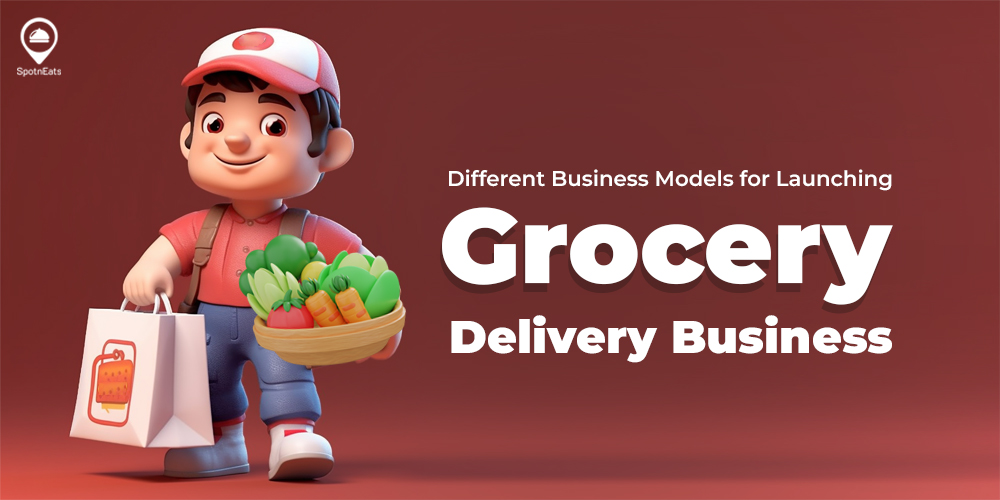
Different Business Models for Launching Grocery Delivery Business
The grocery business has scope for future entrepreneurship. For this reason, if you plan to be involved in it, you need to know about the business models and role of grocery delivery software. And the opportunities to earn from it. Continue to read to know all the ins and outs of grocery business models. What do you do when you don’t have the essentials needed to prepare food? Yeah, you will visit a nearby grocery shop. But imagine if you are visiting on weekend days, of course, you are not alone there; you will be standing in the middle of people like you.
A report states that the average family spends 1.45 hours a week buying groceries. Thereby this demonstrates how consumer needs and preferences result in the growth of the grocery delivery business. The grocery store has fresh produce, dairy products, processed and canned food items, and household and kitchen essentials.
Traditional Retail Model
While traditional stores have been the backbone of the retail industry, they face challenges in the digital era. The rise of online shopping has created a shift in consumer behavior and opportunities.
Challenges such as increased competition can be mitigated through strategic adaptations. Like implementing grocery ordering software and offering diverse product ranges. Embracing technology allows us to tap into new markets and enhance customer experiences.
Different Business Models
A business model is a plan that outlines how a grocery delivery business will generate revenue and make a profit. A complete plan for the successful operation of a business, including operations like
- Identifying sources of revenue
- The intended customer base
- Products
- Details of financing
Before starting the business, you need to do groundwork and research to be successful and generate revenue. For this business, the grocery delivery software implementation, and maintaining the intended customer base and products is simple. The industry has potential but you must know the different models that generate revenue. Here are some.
Subscription-Based Models
Subscription-based models provide a seamless experience by offering personalized services. Notably, the grocery delivery business model ensures a steady stream of revenue.
To overcome the surge in price and inflation, a subscription plan can help customers. Strategic marketing, innovative offerings, and impeccable service are key elements. in this business model.
On-Demand Delivery
On-demand delivery services have redefined the concept of immediacy in grocery shopping. The growing usage of grocery delivery software has influenced grocery delivery. Which results in receiving the orders within hours and meeting the demands.
The success of on-demand delivery relies heavily on seamless technology integration. Efficient order tracking and user-friendly apps contribute to a positive customer experience. And it also helps to distinguish businesses in this competitive landscape. Increase the customer’s convenience.
Collaborations with Local Stores
Collaborating with local stores supports small businesses and strengthens community ties. Grocery delivery services act as a bridge, connecting consumers with their local retailers.
Grocery delivery software can be used to collaborate with local vendors. Your app can be made available online to increase business and get mutual benefits. So the app is a tool to link local vendors and customers and use them as your business model to profit.
Hybrid Business Models
Hybrid models seamlessly blend traditional retail elements with tech-savvy approaches, offering the best of both worlds. This approach allows businesses to cater to a diverse customer base, combining the tactile experience of in-store shopping with the efficiency of online services.
Many success stories in the grocery delivery industry exemplify the effectiveness of hybrid models. Combined tradition and technology have resulted in increased customer satisfaction and sustainable growth.
Conclusion
To summarize, the grocery delivery business boasts various models, each catering to different consumer needs. From subscription-based to on-demand services, these models collectively contribute to the industry.
Proper research and planning according to your customer base’s needs. At the same time whatever business model you choose, develop grocery delivery software as a moss pole for your business. We at SpotnEats specifically develop your idea into a supportive app for your businesses. The people in the grocery delivery business, hope the information about business models is useful.
Comments are closed.
